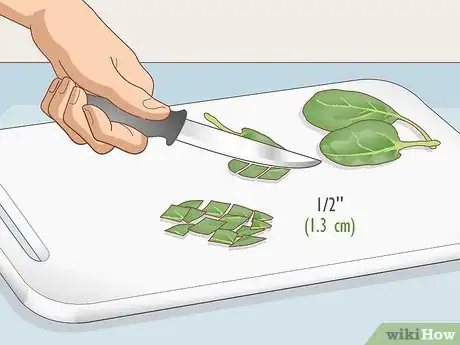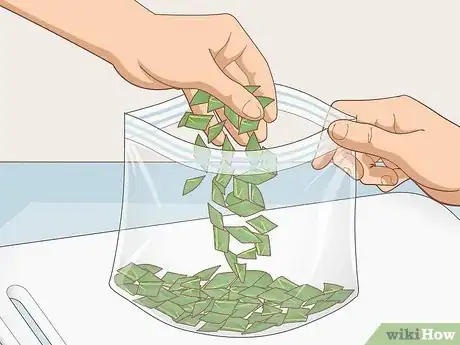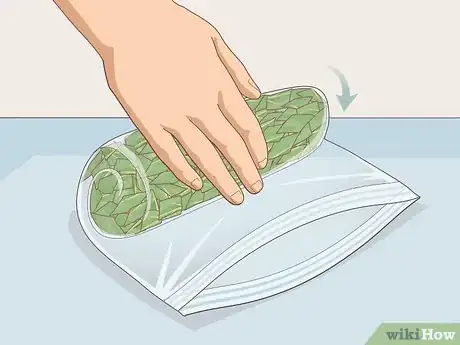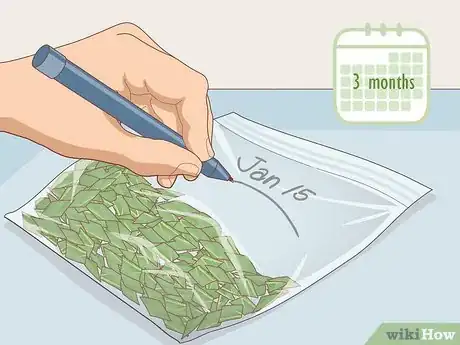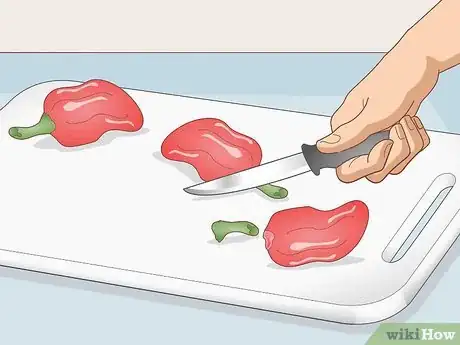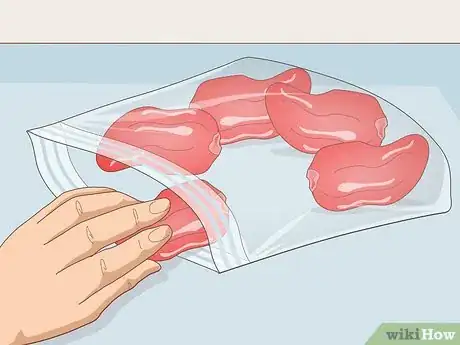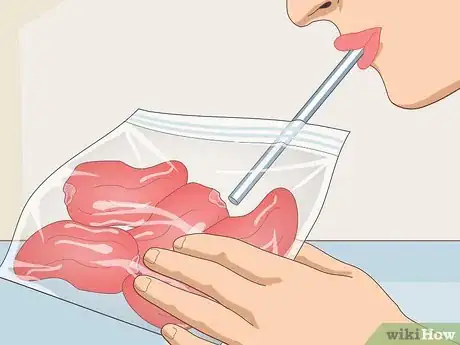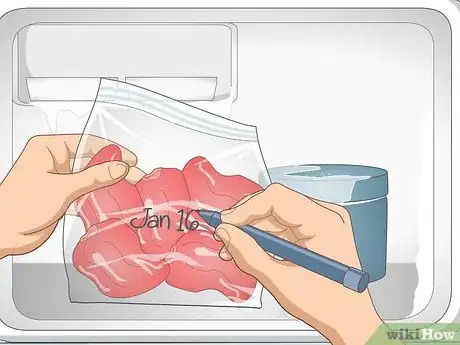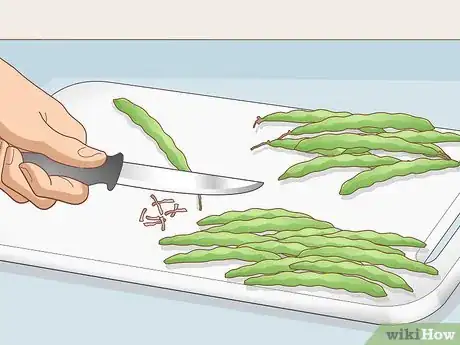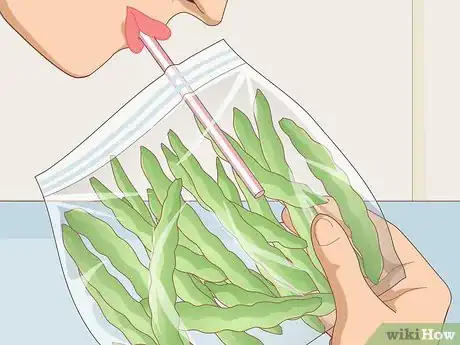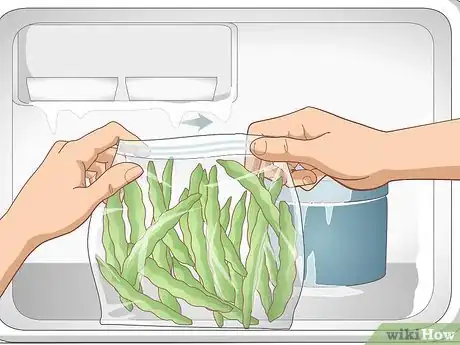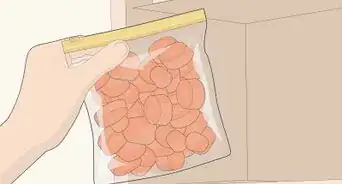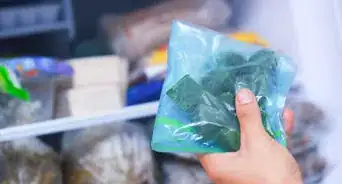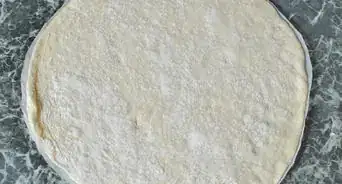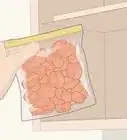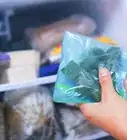This article was co-authored by wikiHow staff writer, Hannah Madden. Hannah Madden is a writer, editor, and artist currently living in Portland, Oregon. In 2018, she graduated from Portland State University with a B.S. in Environmental Studies. Hannah enjoys writing articles about conservation, sustainability, and eco-friendly products. When she isn’t writing, you can find Hannah working on hand embroidery projects and listening to music.
There are 9 references cited in this article, which can be found at the bottom of the page.
This article has been viewed 23,798 times.
Learn more...
Blanching vegetables is the process of quickly boiling them before you freeze them to lock in nutrients and flavor. Blanching can cause vegetables like leafy greens or string beans to wilt, so it might not be the best option for all vegetables. To freeze leafy greens without blanching them, chop them into small pieces and put them in a sealed plastic bag. To freeze large vegetables or a lot of small vegetables, use a straw to suck the air out of your plastic bag before you freeze them.
Steps
Freezing Leafy Greens
-
1Chop your vegetables into 1⁄2 inch (1.3 cm) pieces. Use a sharp knife and a cutting board to cut up your leafy greens into small, 1⁄2 inch (1.3 cm) pieces. Cutting your vegetables mimics the effects of blanching and stops the enzyme reaction in the vegetable that causes flavor and color loss.[1]
- Leafy greens include kale, lettuce, arugula, and spinach.
- Use caution as you chop your vegetables. Keep your fingers tucked underneath your hand with your knuckles facing the knife to avoid an injury.
-
2Place your vegetable bits into a plastic bag that can be sealed. Lay a resealable plastic bag on its side. Portion out the amount of vegetables that you think you'll use in 1 serving. Spread your vegetable pieces in a thin, even layer inside of the bag, making sure they don’t clump up at the bottom.[2]
- If you aren't sure how many vegetable pieces you'll need for 1 serving, put about 1 cup (220 g) in each bag.
- Spreading the vegetable pieces out will allow all of them to freeze evenly and will trap less air in the bag.
Advertisement -
3Roll the bag upwards to remove all of the air and then seal it. Leave the plastic bag unsealed and slowly start rolling it from the bottom upward. Keep it tight so that all of the air can escape from the bag. Seal the bag once you reach the top and all the air is gone.[3]
- You can also use a vacuum sealer to seal the contents of your bag.
-
4Label your bag and place it in the freezer for up to 3 months. Use a permanent marker to write the date and the contents of your bag. Keep it in the freezer for up to 3 months and use it in sauces, casseroles, and stir-fries. Do not open up your bag unless you are going to use your vegetables, since exposure to air will make them spoil faster.[4]
Tip: Do not let your greens thaw before you use them.
Storing Large Vegetables
-
1Trim any pieces that you don’t need. Cut the ends off of zucchinis, peel onions, and cut the stems off of peppers using a knife and a cutting board. Cut off any part of the vegetable you don’t want to use and dispose of it.[5]
- Leave the skin on vegetables like zucchini and cucumber. This will help protect them in the freezer.
-
2Slice large vegetables in half length-wise. Your food will freeze better in smaller pieces, so cut larger vegetables like corn, bell peppers, zucchinis, and onions in half. This will also make them easier to fit into your bag since they will be flatter.[6]
Tip: If you don’t want to use the seeds in your dishes, take those out after you slice your vegetables in half.
-
3Place each vegetable in its own plastic bag that can be sealed. Each vegetable needs its own plastic bag so that it can freeze thoroughly. Set each vegetable in its own bag in 1 layer. The thinner the layer, the better the vegetable will freeze.[7]
- Some large vegetables, like zucchini and cucumbers, may need 1 gallon bags.
-
4Suck the air out of the plastic bag with a straw. Seal the plastic bag until there is a 1⁄2 in (1.3 cm) hole in the seal. Place a straw through that hole into the plastic bag. Suck the air out of the plastic bag until there is little to no air left.[8]
- If you have a vacuum sealer, you can use that instead of the straw.
-
5Seal the plastic bag, label it with a marker, and put it in the freezer. Take the straw out and quickly seal the rest of the plastic bag. Put a label with the vegetable name and the date frozen. Use your frozen vegetables within 3 months of freezing them.[9]
- Do not thaw your vegetables before you use them.
- Frozen vegetables will taste much better in recipes like soups or stews than if you eat them raw.
Freezing Large Quantities of Small Vegetables
-
1Cut off the ends and any unnecessary pieces from your vegetables. Green beans, snap peas, and string beans can have small stems that are not very tasty. Use a sharp knife and a cutting board to cut off any excess parts of your vegetable that you don’t want to eat.[10]
- If you will be using your vegetables in smoothies or a blended sauce, you don’t need to cut any parts of them off.
-
2Place your vegetables into a plastic bag in a thin layer. Portion out your vegetables into manageable serving sizes. Put each portion into a plastic bag that can be sealed. Make sure your bag is not so full that it will be a struggle to close it.[11]
Tip: The thinner the layer of vegetables, the better they will freeze.
-
3Use a straw to suck the excess air out of the bag. Seal the bag up almost all the way, leaving a small gap for a straw. Place your straw into the bag and suck the air into your mouth until the bag is tight against your vegetables. There may be some air left in between the vegetables since there is a large amount.[12]
- You can also use a vacuum sealer to get the air out of your bags.
-
4Seal your bag and put it in the freezer. Take the straw out of the bag and seal it up all the way. Try not to allow any air to get back into the bag before you seal it up. Label the bag with the name of the vegetable and the date that you froze it. Place it in the freezer for up to 3 months before you use it.[13]
- You can leave your vegetables in the freezer for 4 months, but they may not taste as good.
- Do not thaw your vegetables before you use them.
- Frozen vegetables work well in recipes, but they may not be very tasty if you eat them raw.
Things You’ll Need
Freezing Leafy Greens
- Knife
- Plastic bag
Storing Large Vegetables
- Knife
- Plastic bags
- Straw
Freezing Large Quantities of Small Vegetables
- Knife
- Plastic bags
- Straw
References
- ↑ https://northernhomestead.com/how-to-freeze-greens/
- ↑ https://northernhomestead.com/how-to-freeze-greens/
- ↑ https://www.youtube.com/watch?v=QHa9FX75pL0&feature=youtu.be&t=105
- ↑ https://northernhomestead.com/how-to-freeze-greens/
- ↑ https://www.youtube.com/watch?v=PTCxGVboYW4&feature=youtu.be&t=28
- ↑ https://www.youtube.com/watch?v=PTCxGVboYW4&feature=youtu.be
- ↑ https://www.youtube.com/watch?v=PTCxGVboYW4&feature=youtu.be&t=136
- ↑ https://www.youtube.com/watch?v=9I9VB6gQS-o&feature=youtu.be&t=178
- ↑ https://www.youtube.com/watch?v=9I9VB6gQS-o&feature=youtu.be&t=140
